"The upcoming flight test will launch a new generation ship with significant upgrades, attempt Starship’s first payload deployment test, fly multiple reentry experiments geared towards ship catch and reuse, and launch and return the Super Heavy booster," SpaceX said in a blog post on Friday.
15.12.2024
SpaceX rolls 7th Starship spacecraft out for testing ahead of next launch (photos)
We're getting closer to Starship launch number 7.
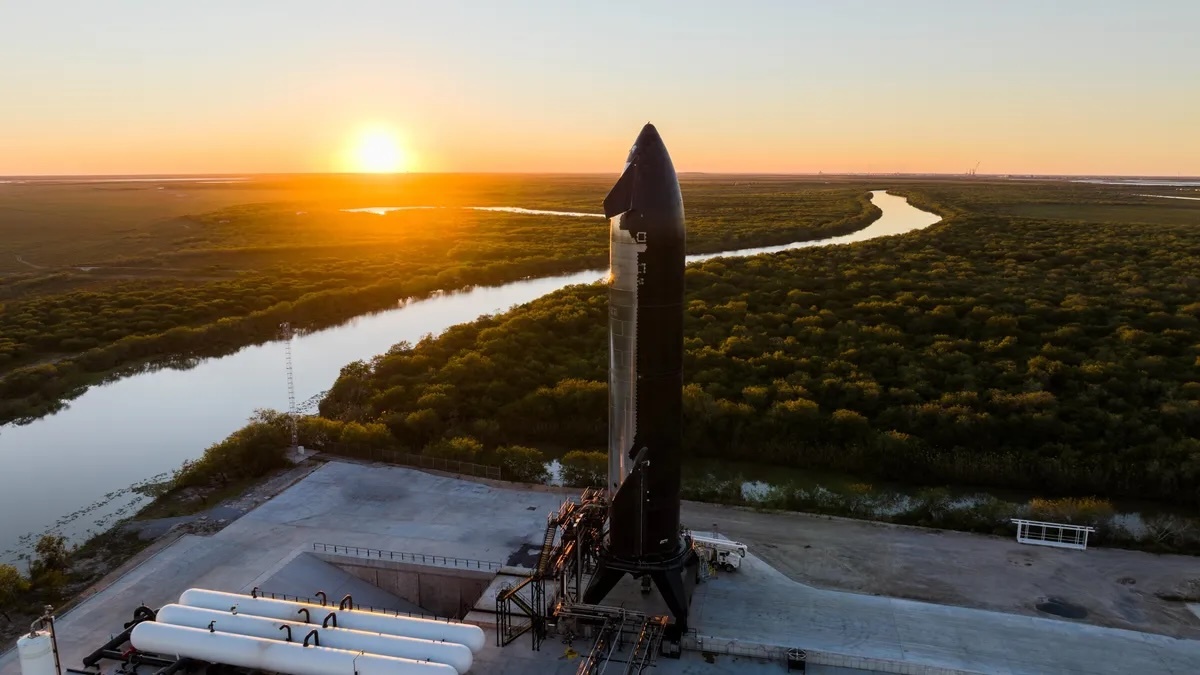
SpaceX's Starship upper stage stands ready for testing ahead of the megarocket's seventh launch. (Image credit: SpaceX)
The world's most powerful rocket is nearing its next test flight.
The seventh launch of SpaceX's Starship megarocket is expected within the next month or so. After a recent static fire of the vehicle's massive Super Heavy first-stage booster, the company has prepped the Starship upper stage for testing of its own.
"Starship ready for testing ahead of Flight 7," SpaceX said in a post on X on Wednesday (Dec. 11), sharing photos of the Starship vehicle on the move to its test stand at the company's Starbase facility in South Texas.
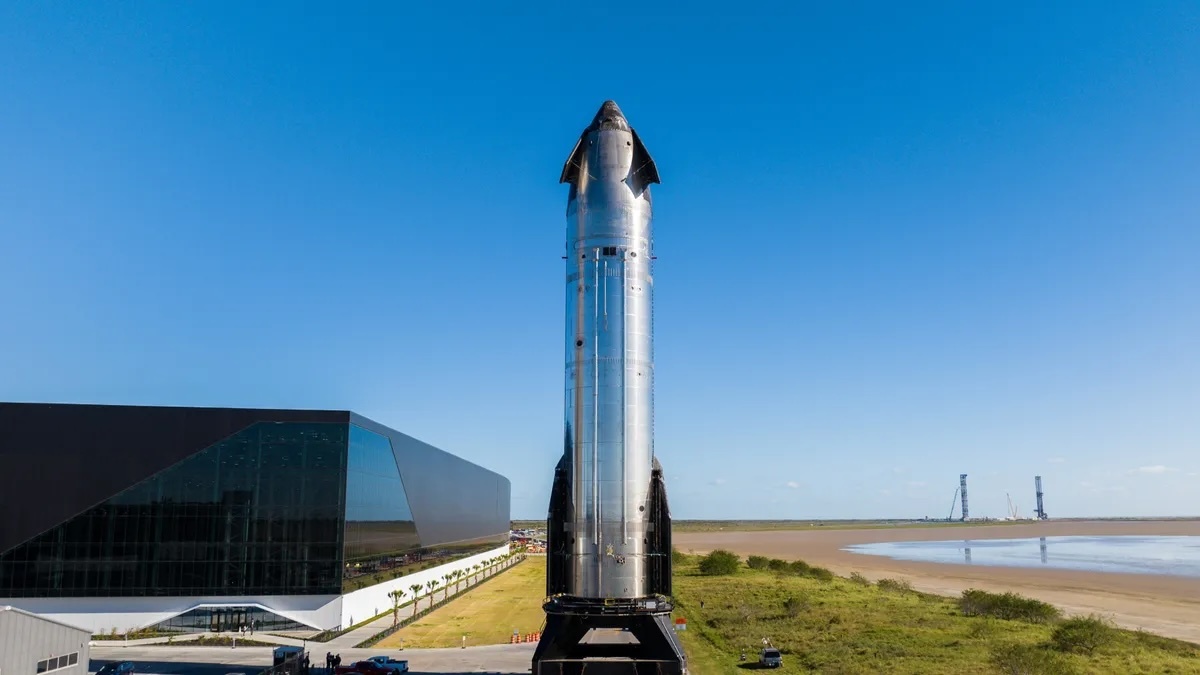
The Flight 7 Starship upper stage at SpaceX's Starbase facility. (Image credit: SpaceX)
SpaceX has not announced a date for the upcoming integrated test flight (IFT), but an email from NASA to the U.S. Federal Aviation Administration identifies Jan. 11as the likely target.
When the Starship upper stage is stacked atop Super Heavy, the integrated vehicle stands nearly 400 feet (122 meters) tall — bigger than any other rocket ever built. The upper stage, known as Ship, measures 165 feet (50 m) tall by itself.
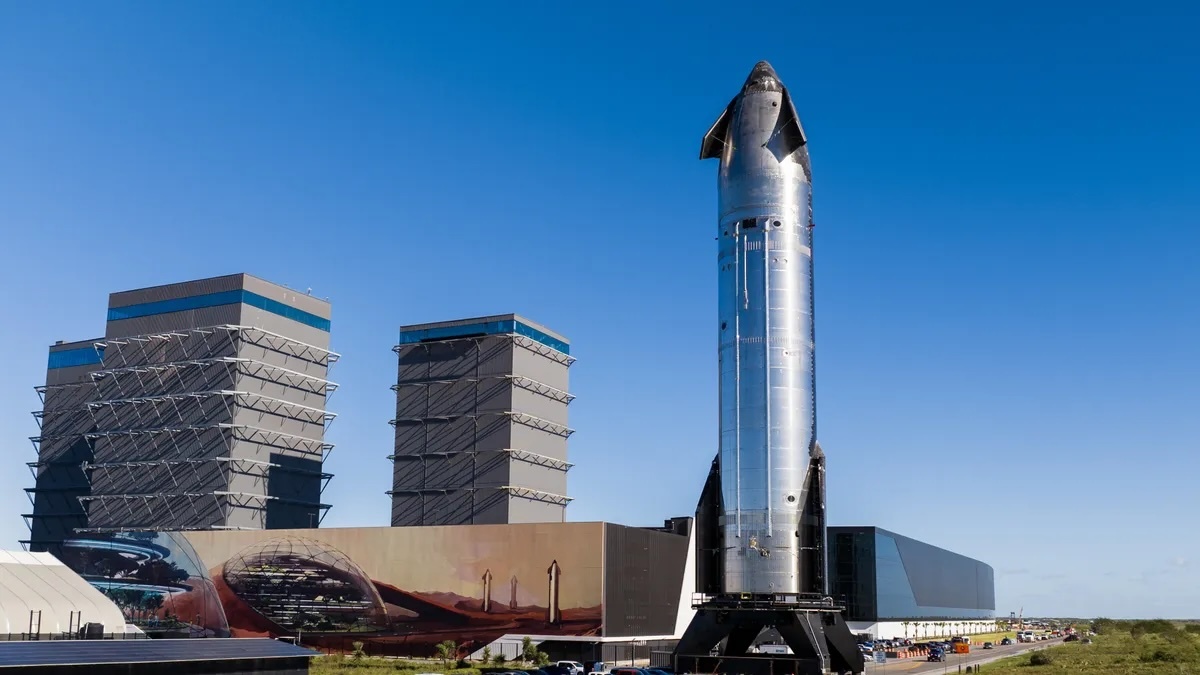
Ship 7 on the move. (Image credit: SpaceX)
Starship is the first-ever fully reusable launch vehicle; both Super Heavy and Ship are designed to return to their launch sites to be caught mid-air by the Starship launch tower's "chopstick arms".
SpaceX first attempted to catch Super Heavy during IFT-5, which launched in October. That try succeeded; the chopsticks made a picture-perfect snag of the returning booster.
The company wanted to make another booster catch on IFT-6, which flew on Nov. 19. But communication issues with the tower scuttled that attempt, and Super Heavy instead diverted for a controlled splashdown in the Gulf of Mexico.
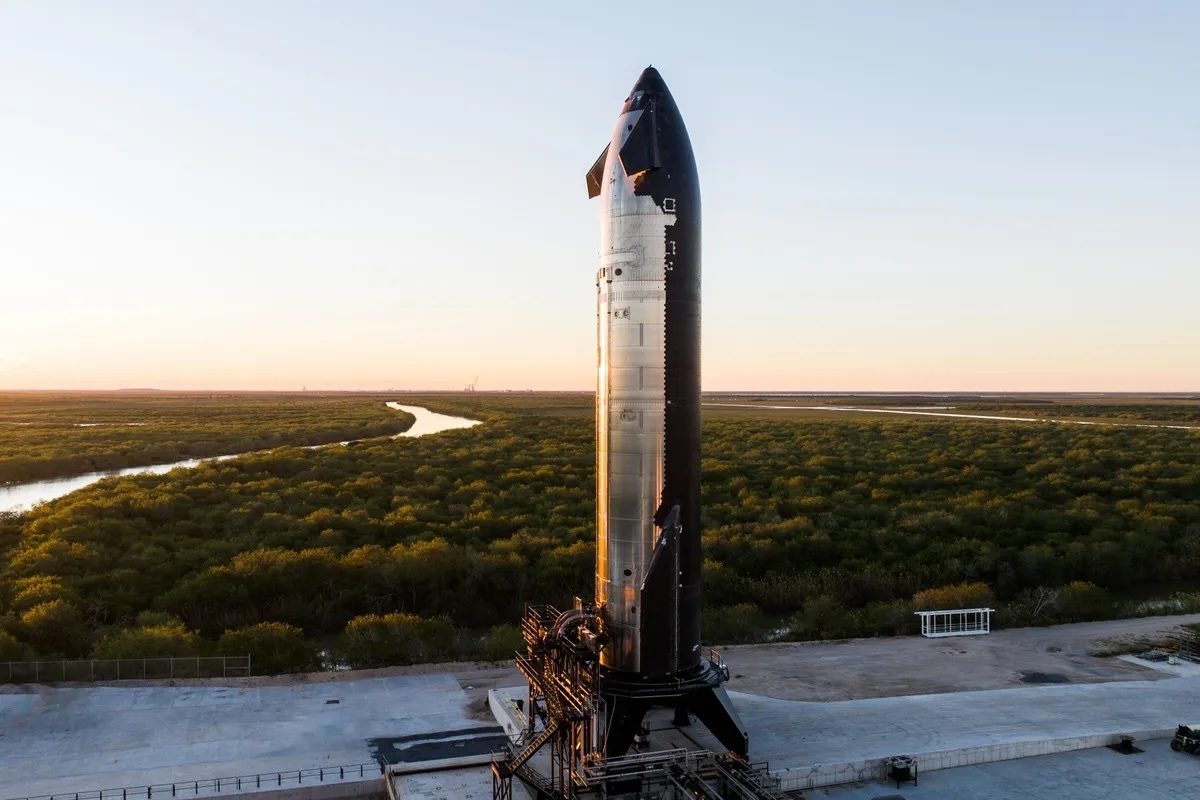
The Starship upper stage stands about 165 feet (50 meters) tall. (Image credit: SpaceX)
IFT-7 will be SpaceX's first Starship launch of 2025. This year saw the launch of four Starship flights, spaced out over March, June, October and November, and doubling the number of Starship flights from 2023.
The number of Starship launches in 2025 is expected to increase again, as Starship checks off boxes toward operational qualification. SpaceX and NASA are eager for Starship's success, as the space agency has tapped the new SpaceX vehicle as the lunar lander for the upcoming Artemis 3 mission to put astronauts on the moon.
Quelle: SC
----
Update: 20.12.2024
.
FAA grants license for SpaceX’s next launch at Boca Chica Beach
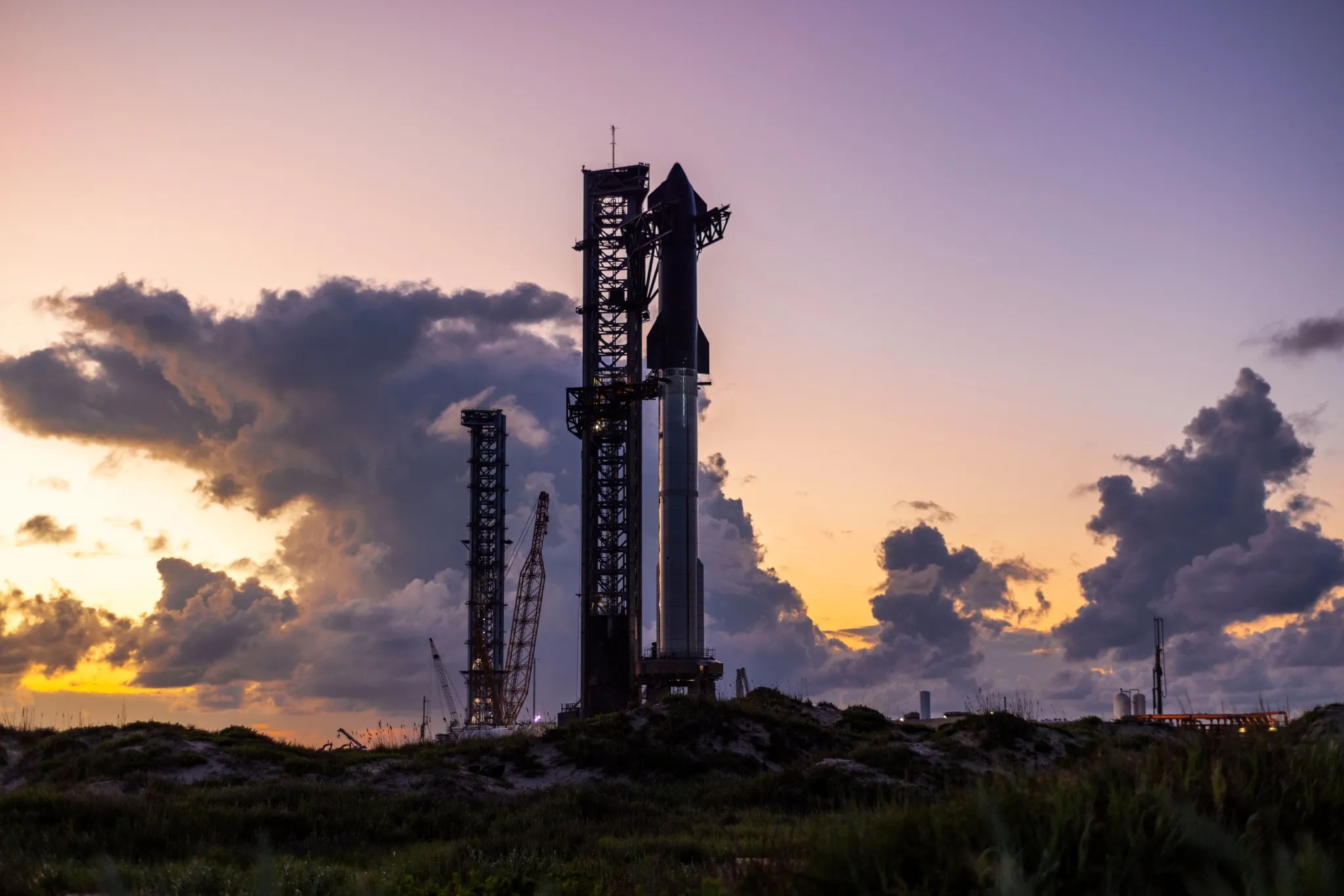
A date for that launch, however, has not yet been set.
SpaceX has conducted three launches this year, including one that produced a sonic boom that could be felt as far away as Harlingen.
Its most recent flight was on Nov. 19 and was attended by President-elect Donald Trump, who has become close to SpaceX CEO Elon Musk — even nominating him to a position to shrink the federal government in his upcoming administration.
SpaceX had sought to replicate its Oct. 13 launch, which included a successful booster catch. That did not work and the Super Heavy booster B13 was diverted away for a soft landing in the Gulf of Mexico. The company had indicated the booster catch would be attempted only with “healthy systems on the booster and tower.”
The Starship S31, meanwhile, which was pushed to the limit with a much harder reentry to test the limits of control flaps and thermal-protection material, successfully conducted a soft landing in the Indian Ocean near Australia.
That flight, SpaceX’s sixth, was the first test flight to carry a payload: a single plush banana, which was not released during the mission.
SpaceX also conducted a launch in March of Starship S28 and Super Heavy booster B10, which was the company’s third orbital flight attempt.
Activity at SpaceX’s Starbase facility has increased over the year and SpaceX has proposed launching up to 25 times a year from Boca Chica Beach.
Meanwhile, the company also filed a petition with Cameron County to incorporate Starbase into a city.
Cameron County Judge Eddie Treviño said in a statement that attorneys are reviewing the petition and if it meets all the requirements, an election will be held.
Quelle: myRGV
----
Update: 5.01.2025
.
SpaceX announces slate of upgrades for its next Starship launch
Starship will launch out of Texas for the seventh time soon.

As SpaceX prepares for a possible Jan. 10 launch of its Starship rocket, Elon Musk's company says it's made special improvements in time for the seventh flight test out of South Texas.
On the last goal, SpaceX isn't promising it will be able to pull off catching the booster in its tower. While SpaceX previously returned the booster during the fifth Starship launch in October, the move was called off on the most recent attempt. And if systems aren't healthy during the upcoming launch, SpaceX says the booster will default to a trajectory that takes it to a landing burn and a soft splashdown in the Gulf of Mexico.
"We accept no compromises when it comes to ensuring the safety of the public and our team, and the return will only take place if conditions are right," the post read.
Still, SpaceX stressed that the upcoming launch will include several experiments focused on returning the ship to the launch site. One test includes using multiple radar sensors on the tower arms (also referred to as chopsticks) to strengthen accuracy when measuring distances between the returning vehicle and the chopsticks.
But a returning booster could be the culprit of a major headache for South Texans. SpaceX warned that the booster will slow down from supersonic speeds upon return, resulting in sonic booms in the area. SpaceX described it as a "brief thunder-like noise," though research has shown it can be similar to a rock concert or chainsaw levels for those closest to the launch site and could even cause structural damage.
Nonetheless, SpaceX boasted about enhancements it made for the seventh Starship launch, including upgrades to the rocket's upper stage expected to bring greater reliability and performance. Starship is also set to deploy 10 Starlink satellite simulators while in space, an important demonstration as SpaceX looks to prove that the rocket has potential in the satellite market.
Though SpaceX has a long list of goals for the upcoming launch, the spacecraft company has even more ambitious plans for 2025. SpaceX is expanding its facilities in Central and South Texas this year, including an addition to its rocket development hangar in McGregor. The Federal Aviation Administration is also hosting meetings this month over SpaceX's proposal to launch Starship even more frequently from Boca Chica.
"This new year will be transformational for Starship, with the goal of bringing reuse of the entire system online and flying increasingly ambitious missions as we iterate towards being able to send humans and cargo to Earth orbit, the Moon, and Mars," SpaceX wrote.
Quelle: CHRON
----
Update: 6.01.2025
.
SpaceX to attempt first payload deployment, engine reuse during Starship Flight 7
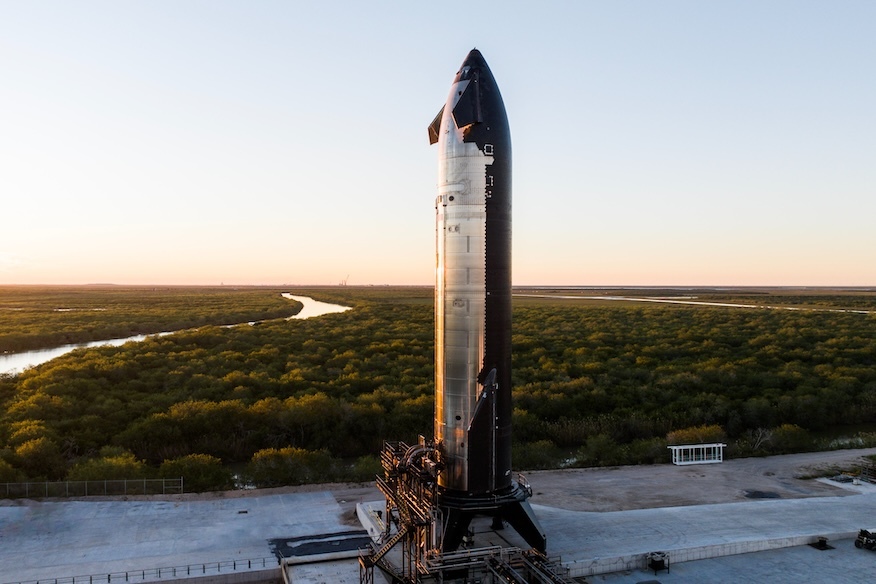
The Starship upper stage on a test firing mount ahead of a static fire demonstration in December 20204. It’s the first Block 2 Starship that will be launched by SpaceX. Image: SpaceX
SpaceX is launching into 2025 with what is poised to be a blistering pace of launch for its super heavy lift rocket, Starship. The company is angling for as many as 25 launches of the nearly 40-story-tall rocket, if approved by federal regulators.
In a lengthy post to its website, SpaceX laid out a laundry list of objectives it hopes to check off during the first mission of the year dubbed, Flight 7. The company didn’t announce a launch date along with the mission description, but current maritime and aviation warnings posted publicly suggest Flight 7 could happen as soon as Friday, Jan. 10, at 4 p.m. CST (5 p.m. EST, 2200 UTC).
In a response to a user on X, formerly Twitter, SpaceX Founder Elon Musk said that SpaceX was aiming for Jan. 10. The Federal Aviation Administration approved a launch license modification on Dec. 17, which paved the way for SpaceX to proceed with the mission’s launch.
“The FAA continues to increase efficiencies in our licensing determination activities to meet the needs of the commercial space transportation industry,” said the Associate Administrator for Commercial Space Transportation Kelvin Coleman, in a statement. “This license modification that we are issuing is well ahead of the Starship Flight 7 launch date and is another example of the FAA’s commitment to enable safe space transportation.”
The latest iterative flight of the 397-foot-tall (121 m) rocket features a slew of upgrades in addition to the new flight objectives.
For starters, this mission will feature the first Block 2 Starship upper stage, tail number S33. From the outside, the biggest visual difference between this Ship and its predecessors are the smaller forward flaps, which are also higher up on the rocket.
SpaceX said it did this in order to reduce the flaps’ “exposure to reentry heating while simplifying the underlying mechanisms and protective tiling.”
“Redesigns to the propulsion system, including a 25 percent increase in propellant volume, the vacuum jacketing of feedlines, a new fuel feedline system for the vehicle’s Raptor vacuum engines, and an improved propulsion avionics module controlling vehicle valves and reading sensors, all add additional vehicle performance and the ability to fly longer missions,” SpaceX wrote.
Other internal upgrades to Ship include “a complete redesign” of the vehicle’s avionics, which “include a more powerful flight computer, integrated antennas which combine Starlink, [the Global Navigation Satellite System], and backup RF communication functions into each unit, redesigned inertial navigation and star tracking sensors, integrated smart batteries and power units that distribute data and 2.7MW of power across the ship to 21 high-voltage actuators, and an increase to more than 30 vehicle cameras giving engineers insight into hardware performance across the vehicle during flight.”
First deployable payload
A marked change to Flight 7 compared to the previous six missions for Starship is that this launch is designed to feature a test payload deployment.
SpaceX said it will fly 10 so-called “Starlink simulators,” which it said are “similar in size and weight to next-generation Starlink satellites.” In its “Progress 2024” report on Starlink, SpaceX wrote that the Starlink V3 satellites will have 160 Gbps of uplink capacity and 1 Tbps of downlink speed, “which is more than 10x the downlink and 24x the uplink capacity of the V2 Mini Starlink satellites.”
Originally, SpaceX intended for these newer larger V3 satellites to fly as V2, but delays of Starship caused them to shift to launching the V2 Mini Starlink satellites onboard Falcon 9 rockets instead. 2024 featured 89 dedicated Starlink launches and one rideshare mission (NROL-126), which was split between 20 Starlink satellites and an unannounced number of satellites for the National Reconnaissance Office’s (NRO) proliferated architecture constellation (believed to be Starshield).
These Starlink simulators will follow a suborbital trajectory and burn up in the atmosphere. During Flight 3, SpaceX performed a demonstration of the payload bay door opening and closing.
Road to reusability
In announcing its Flight 7 goals, SpaceX suggests that achieving full reusability with Starship is a 2025 goal as the company continues “flying increasingly ambitious missions as we iterate towards being able to send humans and cargo to Earth orbit, the Moon, and Mars.”
To that end, S33 will once again perform a relight demonstration of a Raptor engine while in space. The upper stage also features “several experiments focused on ship return to launch site and catch.”
Musk suggested in a post on X in 2024 that catching the Starship’s upper stage might be attempted during Flight 8.
“On Starship’s upper stage, a significant number of tiles will be removed to stress-test vulnerable areas across the vehicle,” SpaceX wrote. “Multiple metallic tile options, including one with active cooling, will test alternative materials for protecting Starship during reentry.
“On the sides of the vehicle, non-structural versions of ship catch fittings are installed to test the fittings’ thermal performance, along with a smoothed and tapered edge of the tile line to address hot spots observed during reentry on Starship’s sixth flight test.”
SpaceX said it took precautions to increase the likelihood that it will be able to proceed with a catch attempt of the Super Heavy booster as well. It acknowledged that damaged sensors prevented proceeding with the catch during Flight 6 and referred to hardware upgrades to the ‘Mechazilla’ launch and catch tower to prevent a repeat incident.
Additionally, SpaceX will use a Raptor engine on the Super Heavy booster, B14, which first flew on Flight 5 in October 2024. In a response to an X user, Musk seemed to confirm that engine was serial number 314, which featured a pie symbol around the number on its nozzle.
The path to reuse is important not only for SpaceX’s ambitions for Starship, but also for NASA and its Artemis program. Starship was tapped by the Human Landing System program to perform landing duties during the Artemis 3 and Artemis 4 missions to the Moon.
In order to achieve that, SpaceX will send a tanker version of Starship into low Earth orbit where it will be filled over the course of more than a dozen launches and propellant transfers. A demonstration campaign of this method is expected to begin in the spring and continue into the summer.
SpaceX needs to perform an uncrewed landing demonstration and ascent from the Moon’s surface prior to supporting crew members onboard. That uncrewed demo is also expected in 2025 ahead of the launch of Artemis 3 in mid-2027.
To achieve this feat, SpaceX is working with the FAA to increase the number of Starship launches and landings at its Starbase facilities in southern Texas up to 25. An in-person, public meeting is scheduled for Tuesday, Jan. 7, at the Texas Southmost College and a virtual meeting will be held on Monday, Jan. 13.
A second, in-person meeting was scheduled for Jan. 9, but the FAA said that was canceled due to the designation of the day as a National Day of Mourning for former President Jimmy Carter.
Quelle: SN
----
Update: 17.01.2025
.
The first Starship flight test of 2025 flew with ambitious goals: seeking to repeat our previous success of launching and catching the world’s most powerful launch vehicle while putting a redesigned and upgraded Starship through a rigorous set of flight demonstrations.
It served as a reminder that development testing, by definition, can be unpredictable.
On its seventh flight test, Starship successfully lifted off from Starbase in Texas at 4:37 p.m. CT on Thursday, January 16. At launch, all 33 Raptor engines powered the Super Heavy booster and Starship on a nominal ascent. Following a successful hot-stage separation, the booster successfully transitioned to its boostback burn, with 12 of the planned 13 Raptor engines relighting, to begin its return to the launch site.
Super Heavy then relit all 13 planned middle ring and center Raptor engines and performed its landing burn, including the engine that did not relight for boostback burn. The landing burn slowed Super Heavy down and maneuvered itself to the launch and catch tower arms, resulting in the second successful catch of a Super Heavy booster.
Following stage separation, the Starship upper stage successfully lit all six Raptor engines and performed its ascent burn to space. Prior to the burn’s completion, telemetry was lost with the vehicle after approximately eight and a half minutes of flight. Initial data indicates a fire developed in the aft section of the ship, leading to a rapid unscheduled disassembly.
Starship flew within its designated launch corridor – as all U.S. launches do to safeguard the public both on the ground, on water and in the air. Any surviving pieces of debris would have fallen into the designated hazard area. If you believe you have identified a piece of debris, please do not attempt to handle or retrieve the debris directly. Instead, please contact your local authorities or the SpaceX Debris Hotline at 1-866-623-0234 or at recovery@spacex.com.
As always, success comes from what we learn, and this flight test will help us improve Starship’s reliability as SpaceX seeks to make life multiplanetary. Data review is already underway as we seek out root cause. We will conduct a thorough investigation, in coordination with the FAA, and implement corrective actions to make improvements on future Starship flight tests.
The ship and booster for Starship’s eighth flight test are built and going through prelaunch testing and preparing to fly as we continue a rapid iterative development process to build a fully and rapidly reusable space transportation system.
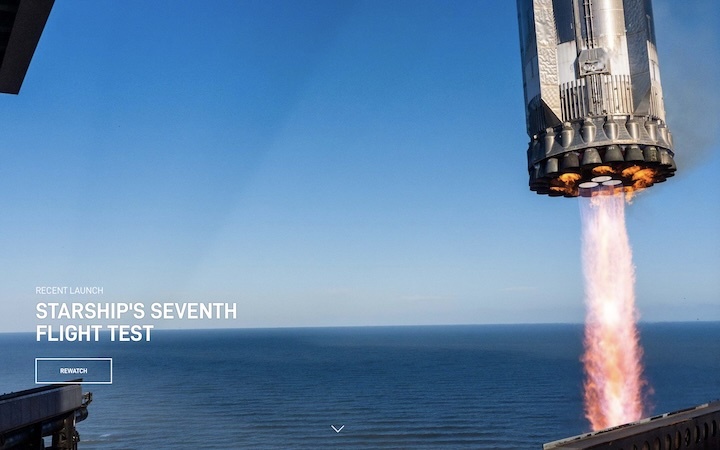
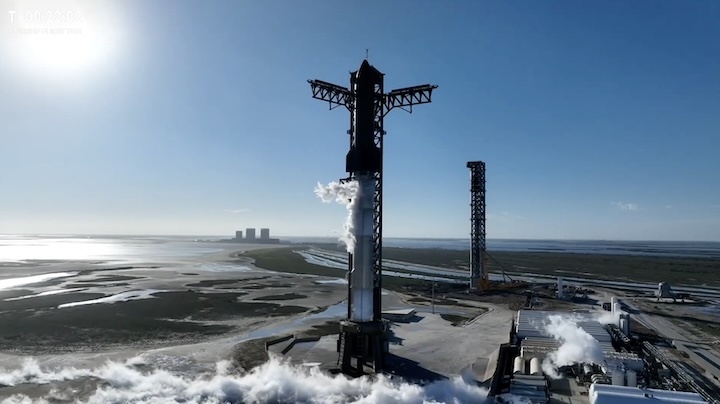
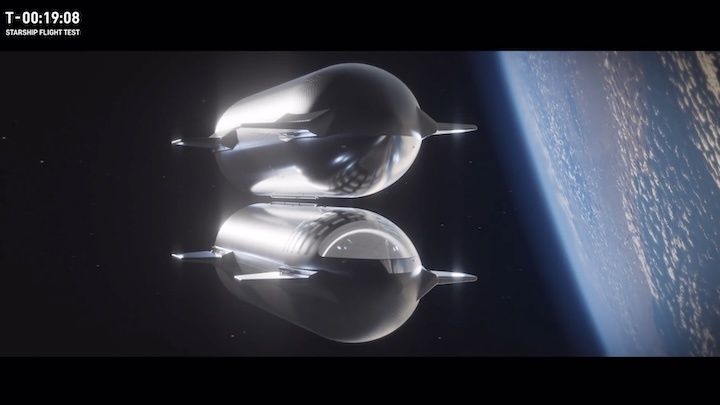
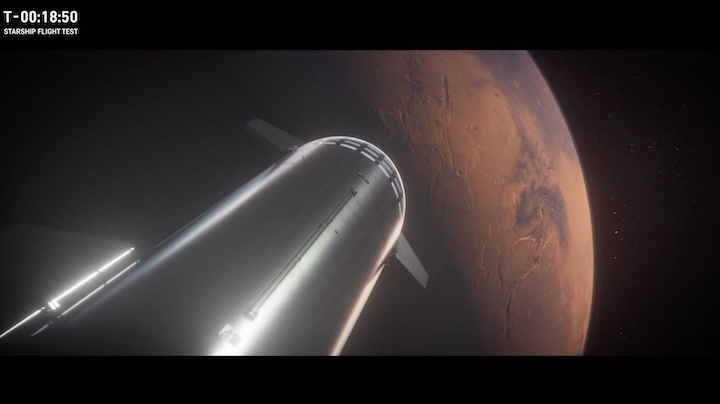

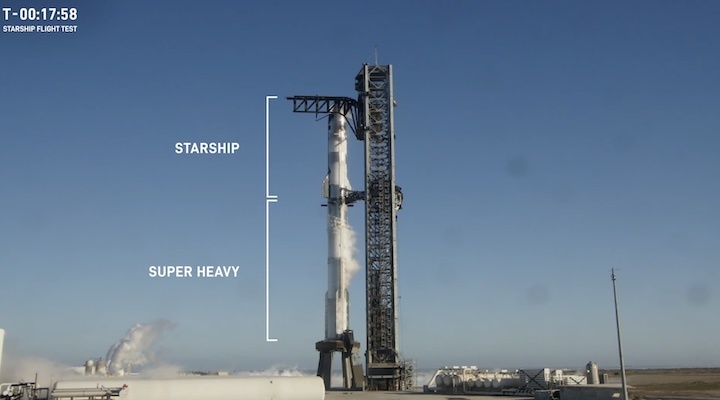

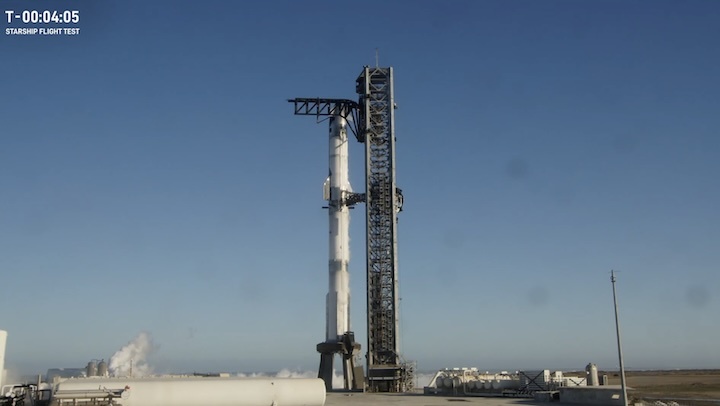
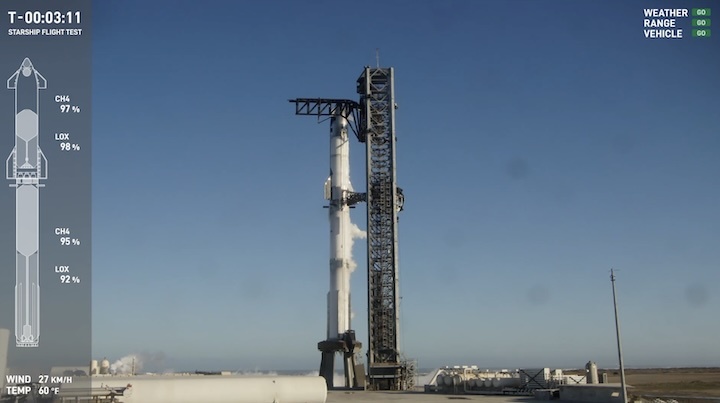
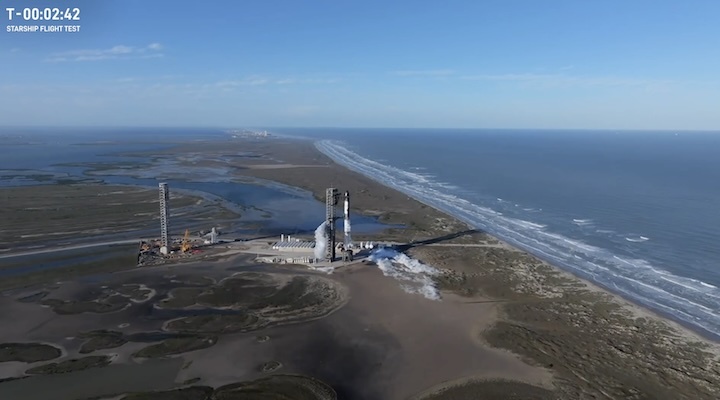
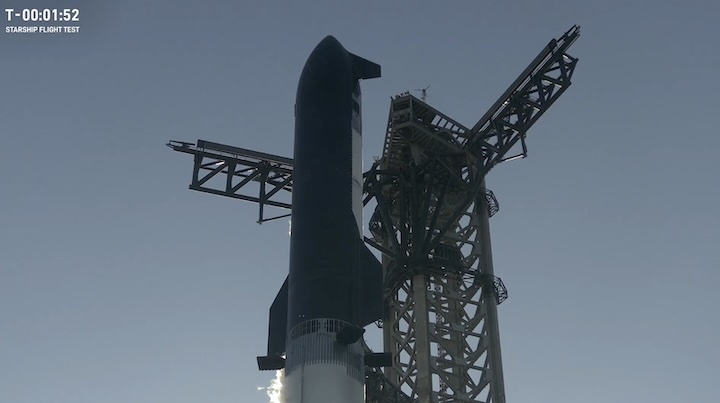
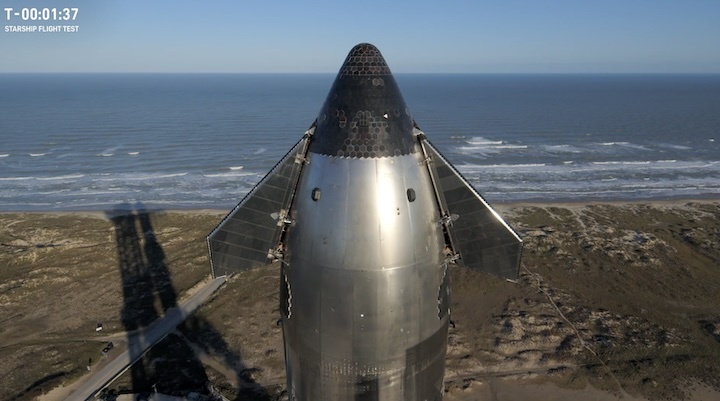

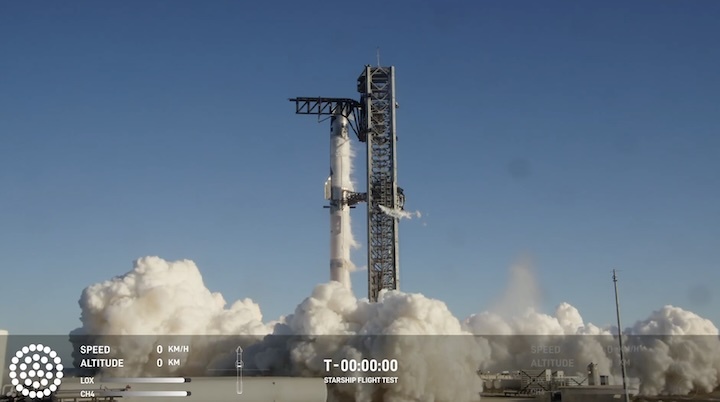
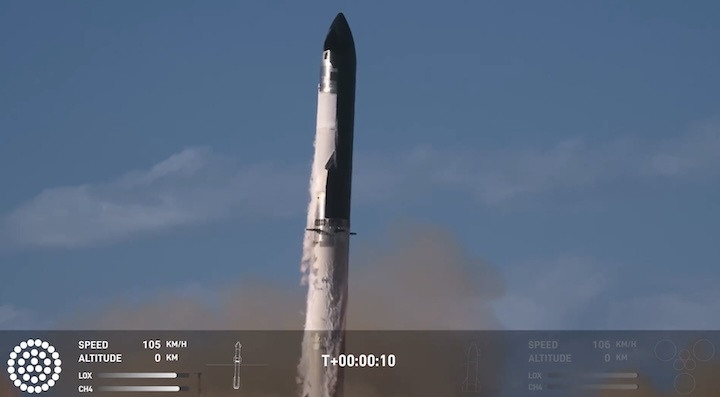
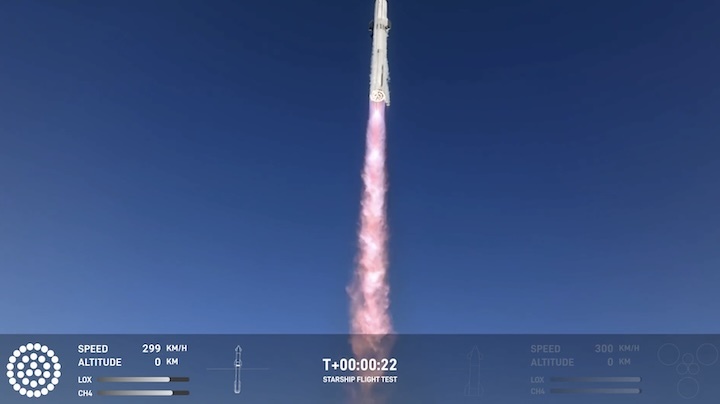
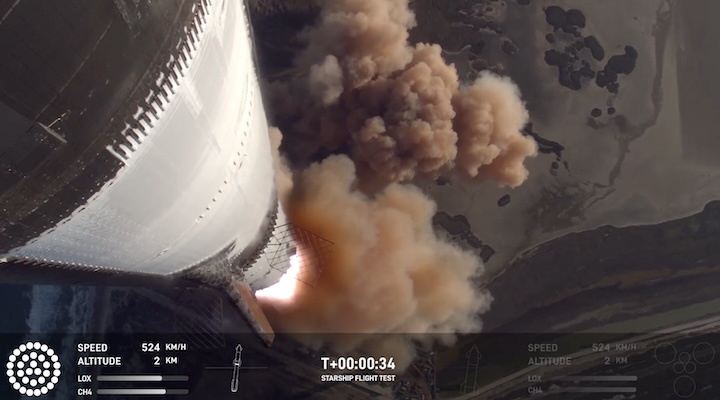
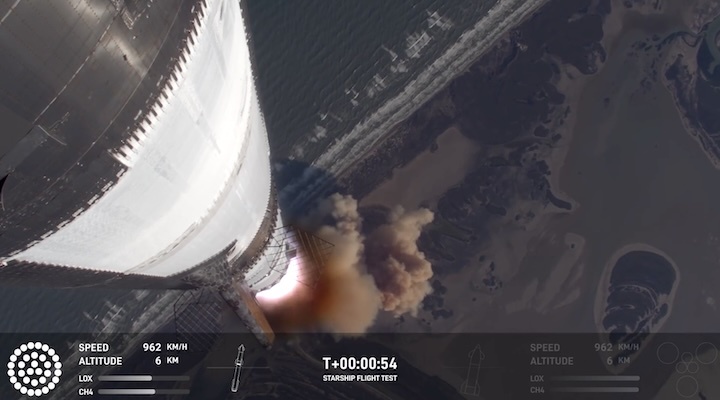
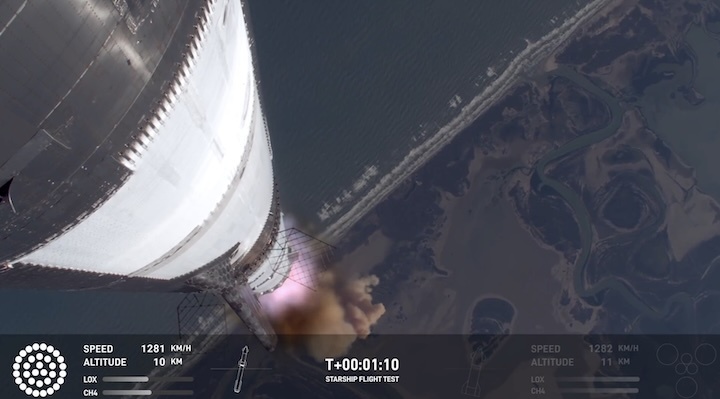
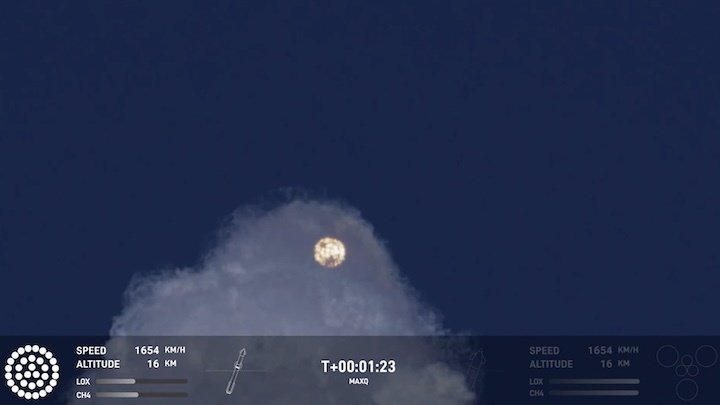
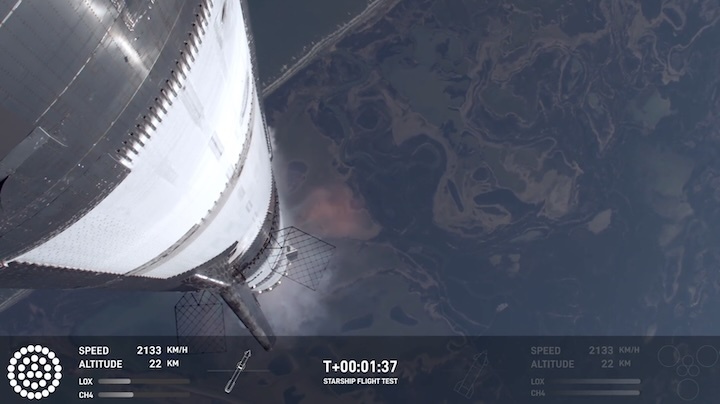
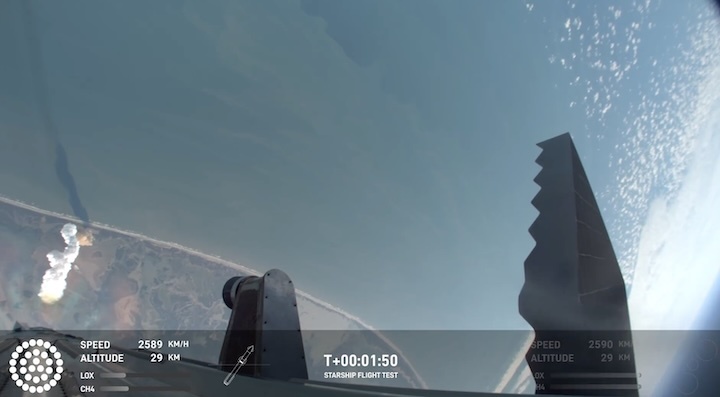
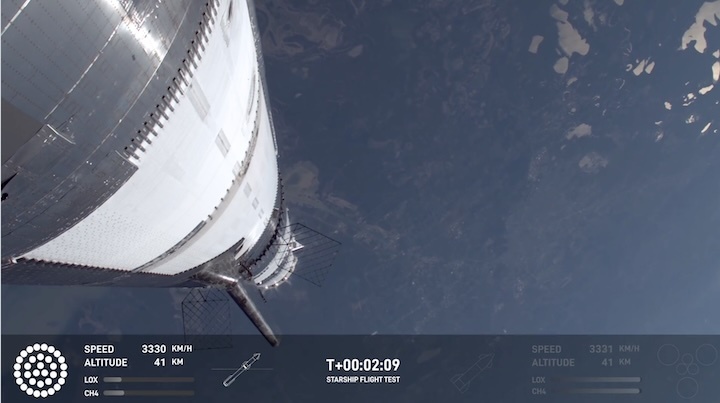
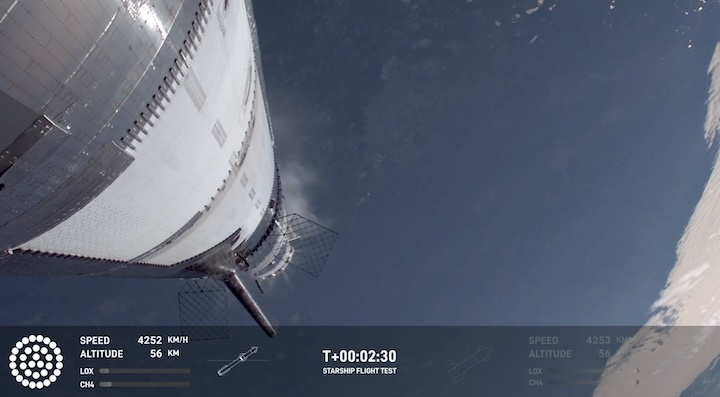
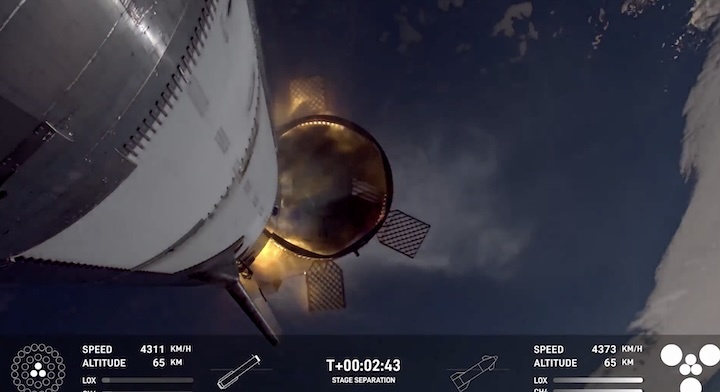
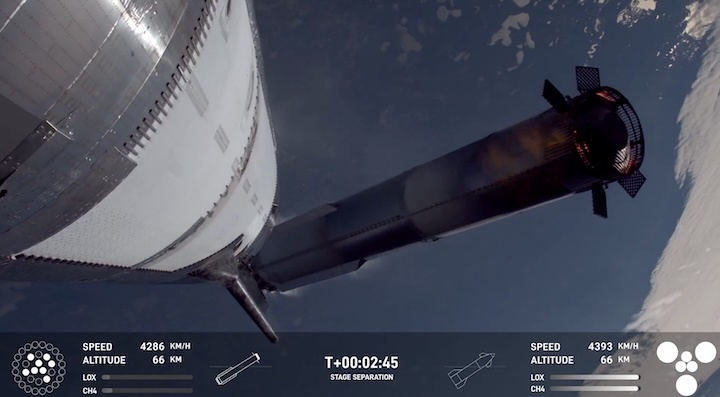
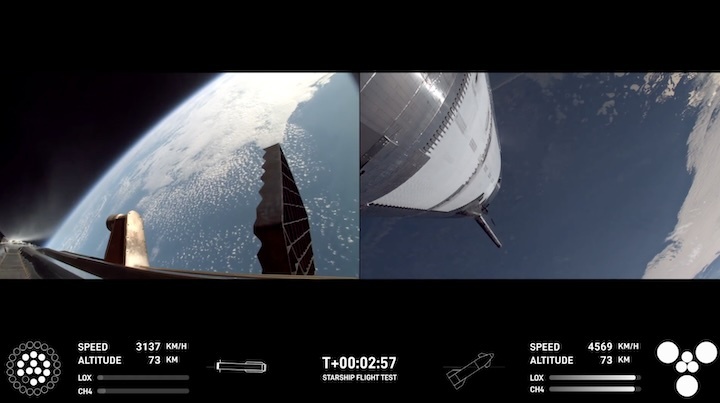
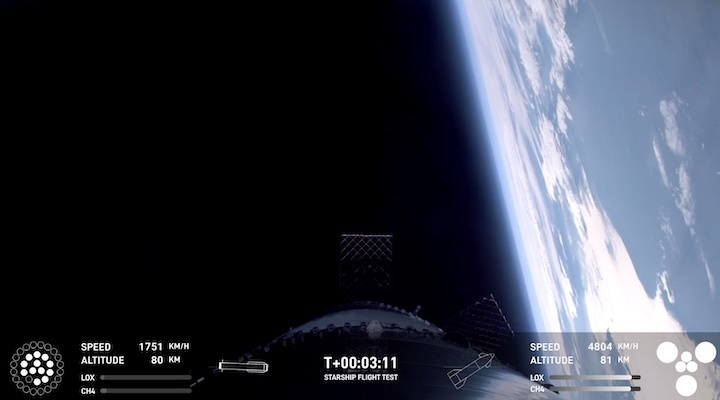


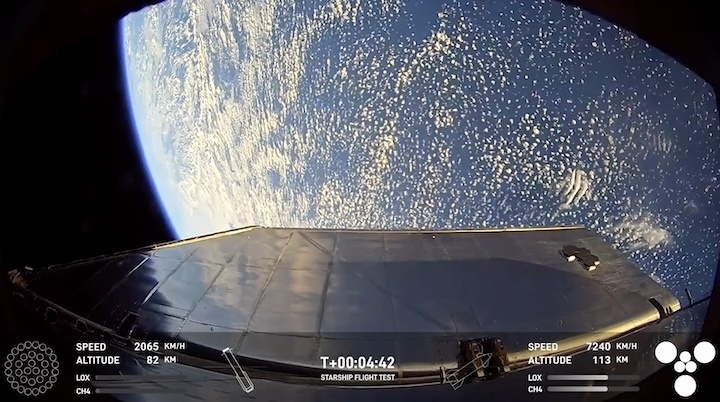
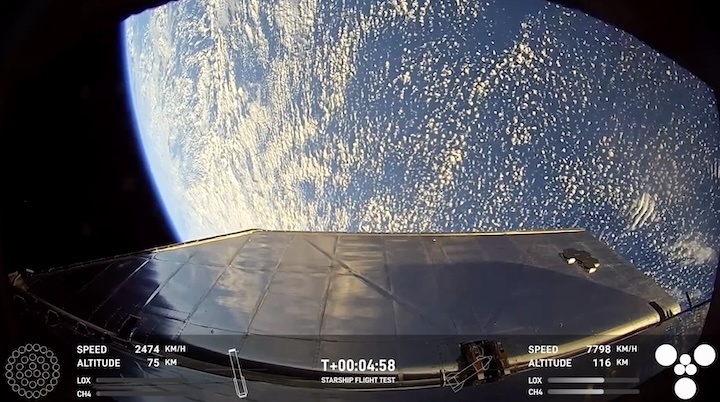
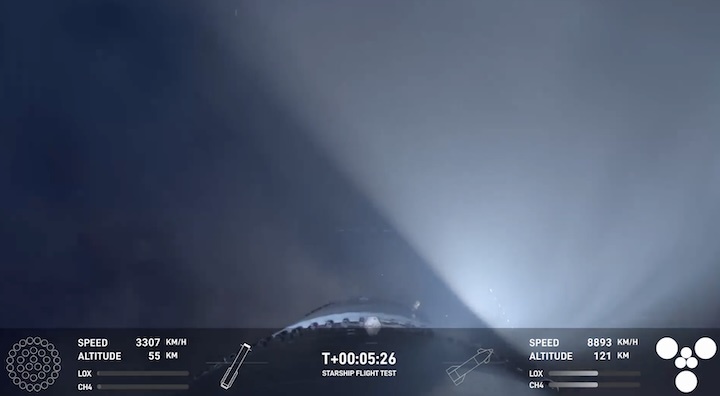

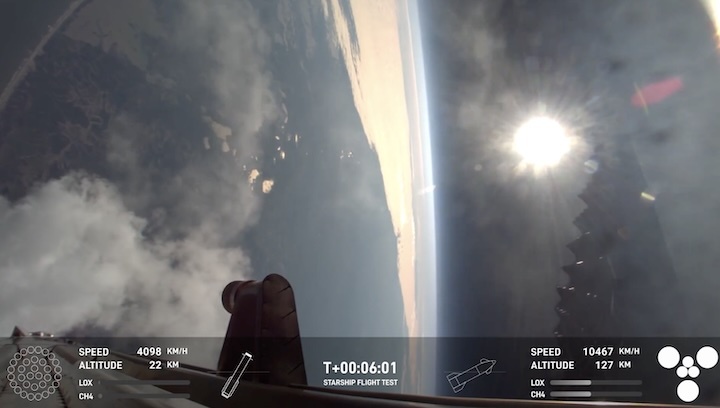
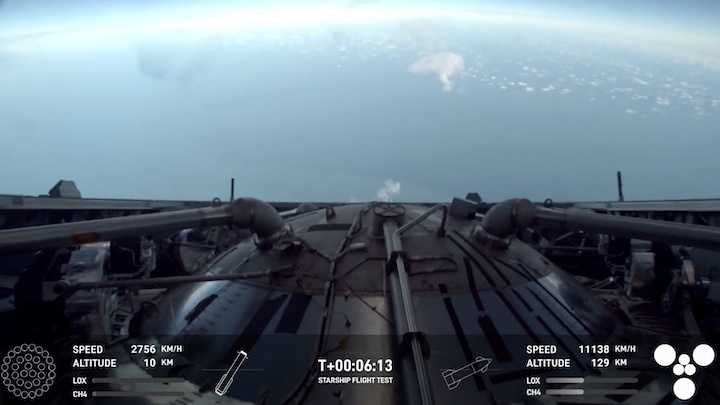
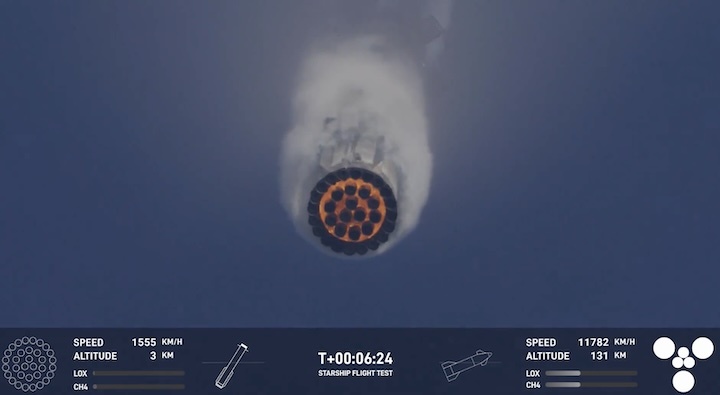
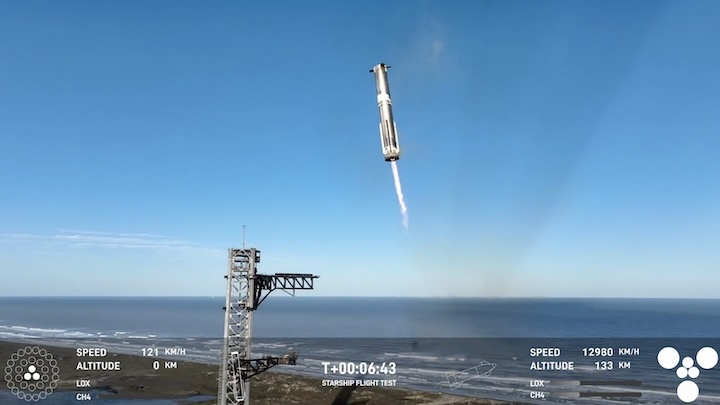
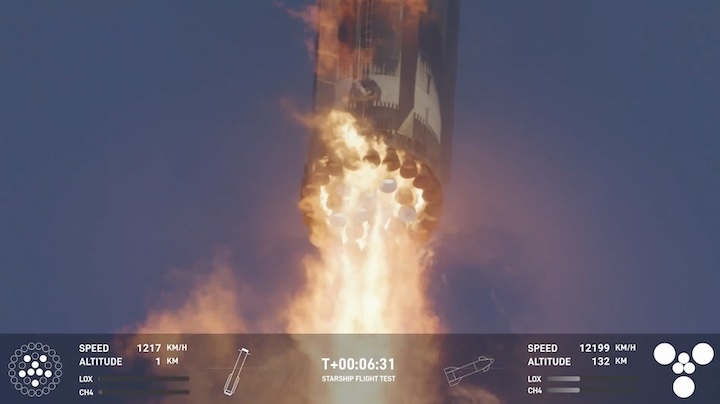
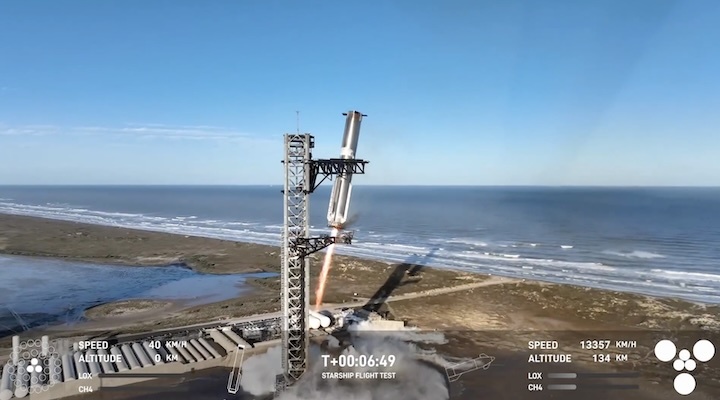
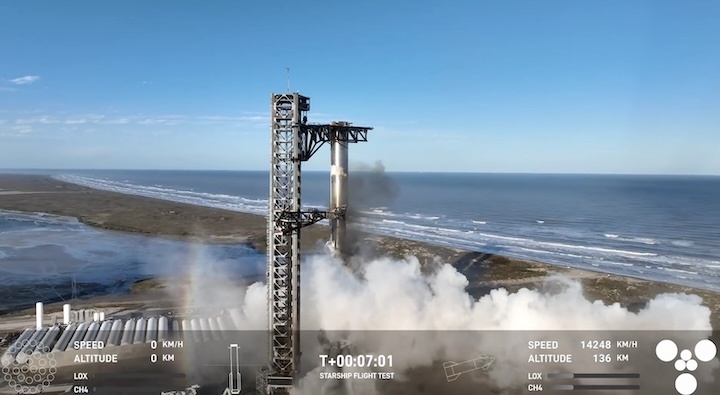
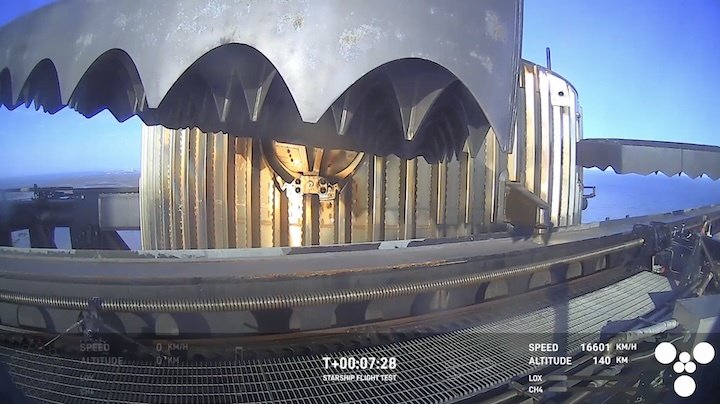
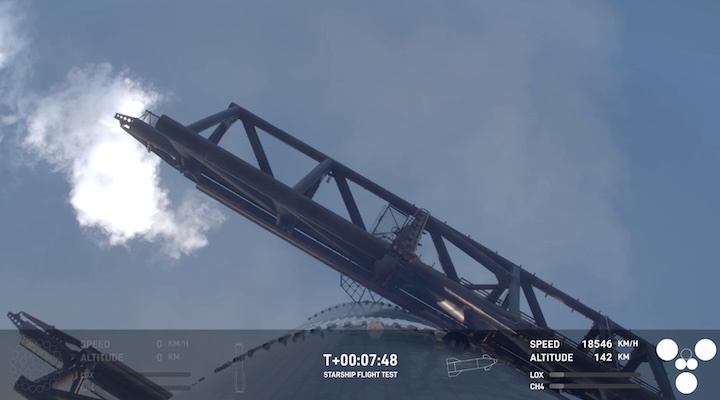
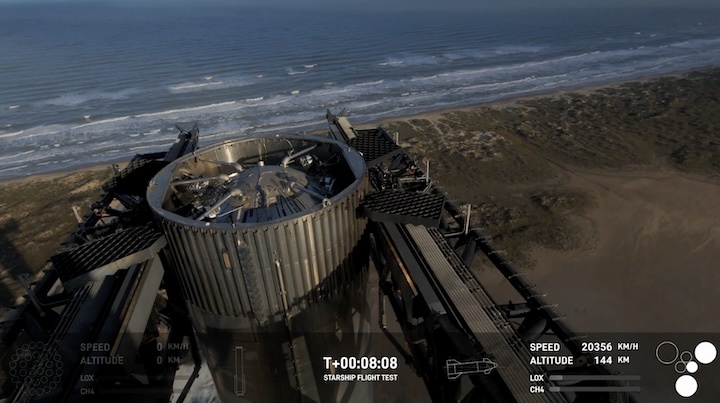
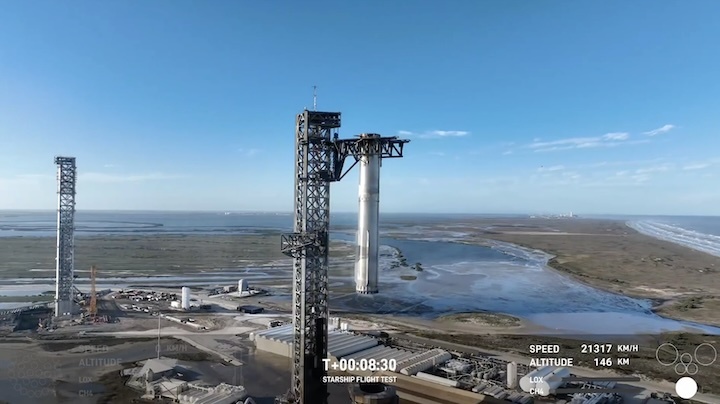
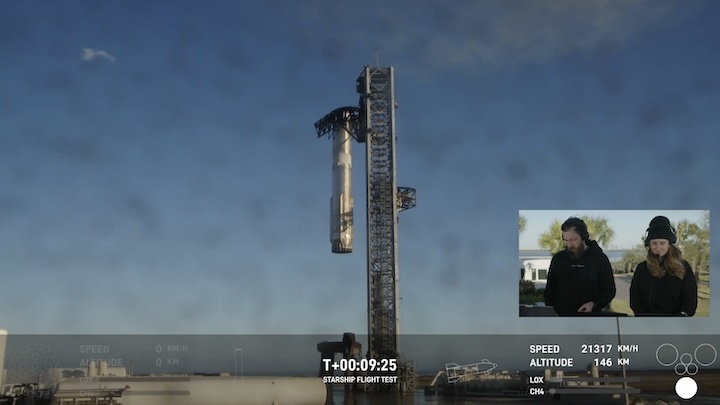
Quelle: SpaceX
+++
Starship7 break-up and re-entry:
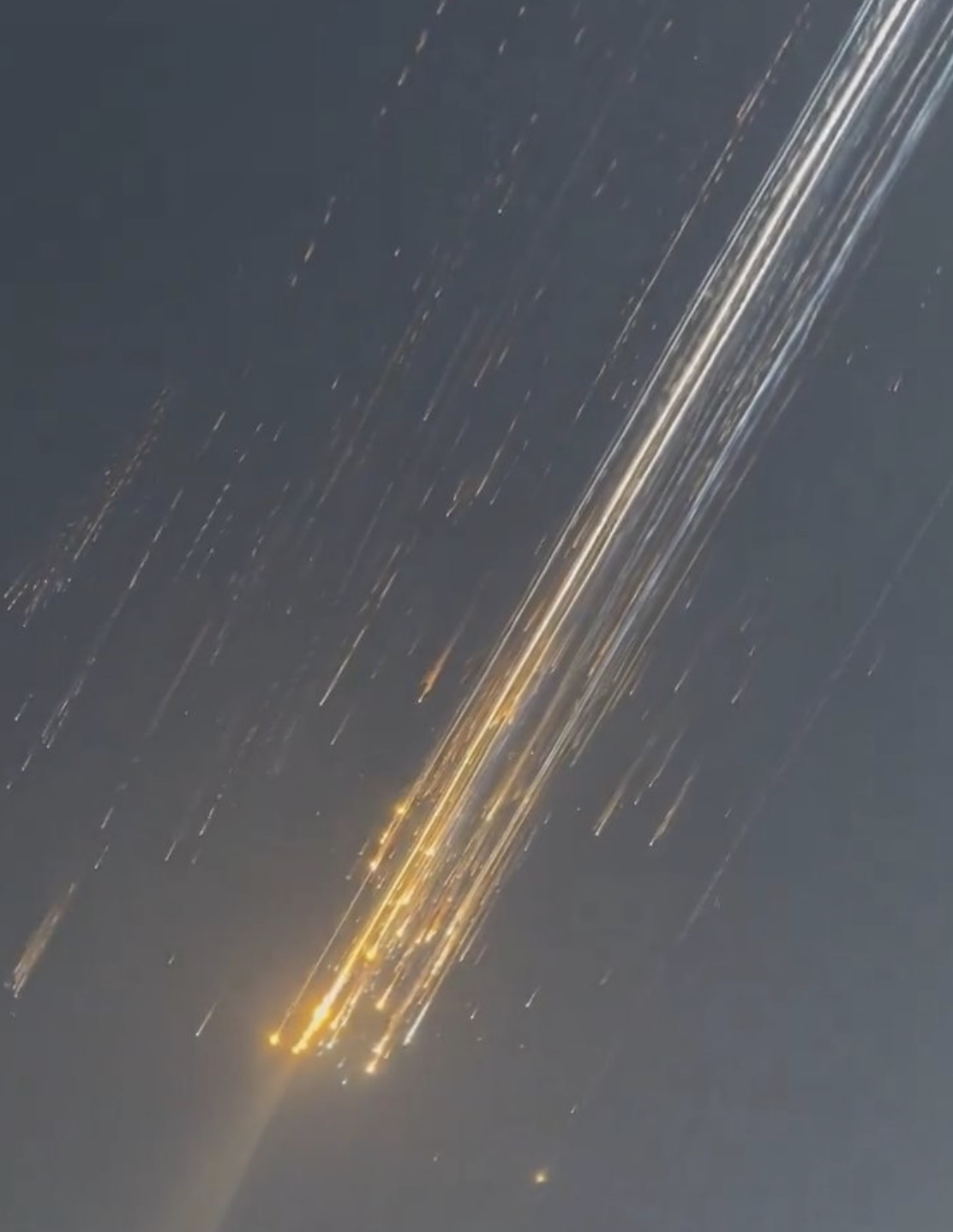
Quelle: SpaceX
+++
SpaceX Starship test fails after Texas launch
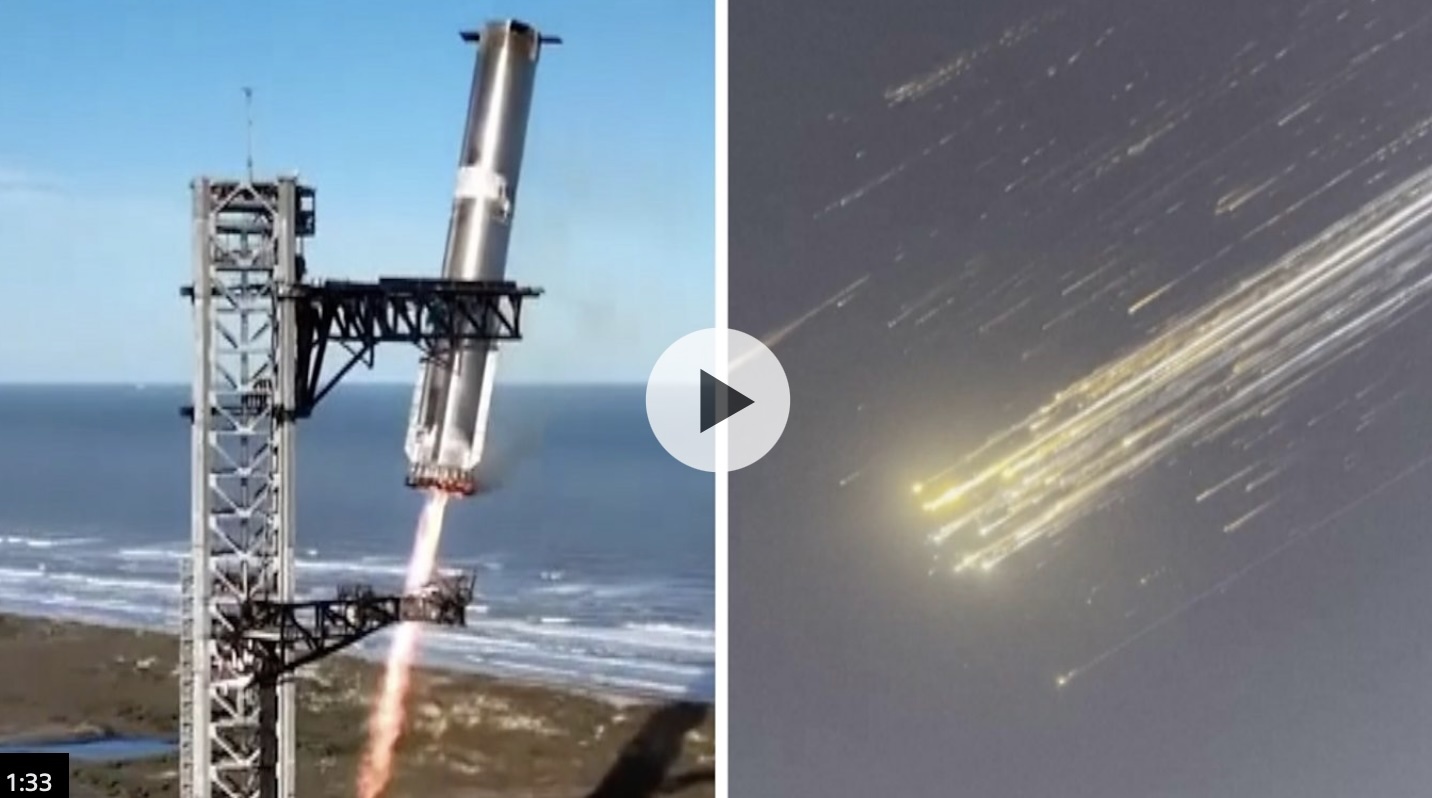
The latest test of Space X's giant Starship rocket has failed, minutes after launch.
Officials at Elon Musk's company said the upper stage was lost after problems developed after lift-off from Texas on Thursday.
But the Super Heavy booster managed to return to its launchpad as planned, prompting an eruption of applause from ground control teams.
The mission came hours after the first flight of the Blue Origin New Glenn rocket system, backed by Amazon boss Jeff Bezos.
The two tech billionaires both want to dominate the space vehicle market.
"Starship experienced a rapid unscheduled disassembly during its ascent burn. Teams will continue to review data from today's flight test to better understand root cause," SpaceX posted on X.
"With a test like this, success comes from what we learn, and today's flight will help us improve Starship's reliability."
Unverified footage shared on social media shows what appears to be the rocket breaking up in flames.
And footage showed orange balls of light flying across the sky over the Haitian capital of Port-Au-Prince, leaving a trail of smoke behind.
"Success is uncertain, but entertainment is guaranteed!" Mr Musk posted on X, sharing a video showing a fiery trail streaking though the sky.
He also said "improved versions" of the ship and booster were "already waiting for launch".
"Preliminary indication is that we had an oxygen/fuel leak in the cavity above the ship engine firewall that was large enough to build pressure in excess of the vent capacity," Musk said a short while later, adding that "nothing so far suggests pushing next launch past next month".
Footage of the launch clocked up 7.2m views, according to a SpaceX livestream.
The Starship system had lifted off from Boca Chica, Texas, at 17:38 EST (22:38 GMT) in the company's seventh test mission.
The Starship upper stage separated from its Super Heavy booster nearly four minutes into flight as planned.
But then SpaceX communications manager Dan Huot reported on a live stream that mission teams had lost contact with the ship.
The Super Heavy booster managed to return to its launchpad roughly seven minutes after lift-off as planned, prompting an eruption of applause from ground control teams.
The US Federal Aviation Administration (FAA) said it was aware "an anomaly occurred" during the SpaceX mission.
"The FAA briefly slowed and diverted aircraft around the area where space vehicle debris was falling. Normal operations have resumed," it said in a statement.
It comes a day after a SpaceX rocket blasted off from Florida carrying two privately constructed lunar landers and a micro rover to the Moon.
The uncrewed Falcon 9 launched from the Kennedy Space Center on Wednesday.
And Bezos' Blue Origin company successfully launched a rocket into orbit for the first time.
It was a huge step forward for Bezos and his company that has spent years getting to the point of sending a rocket into orbit.
Quelle: BBC
